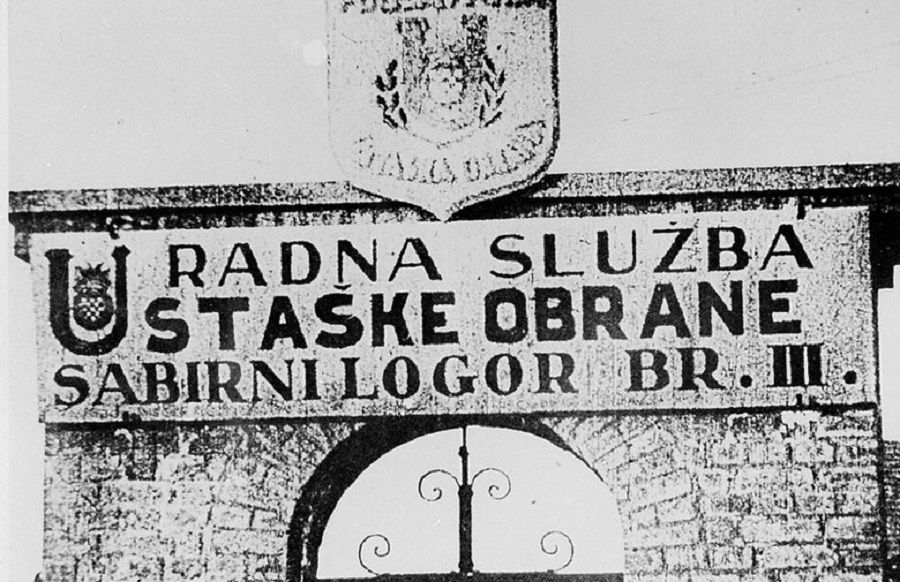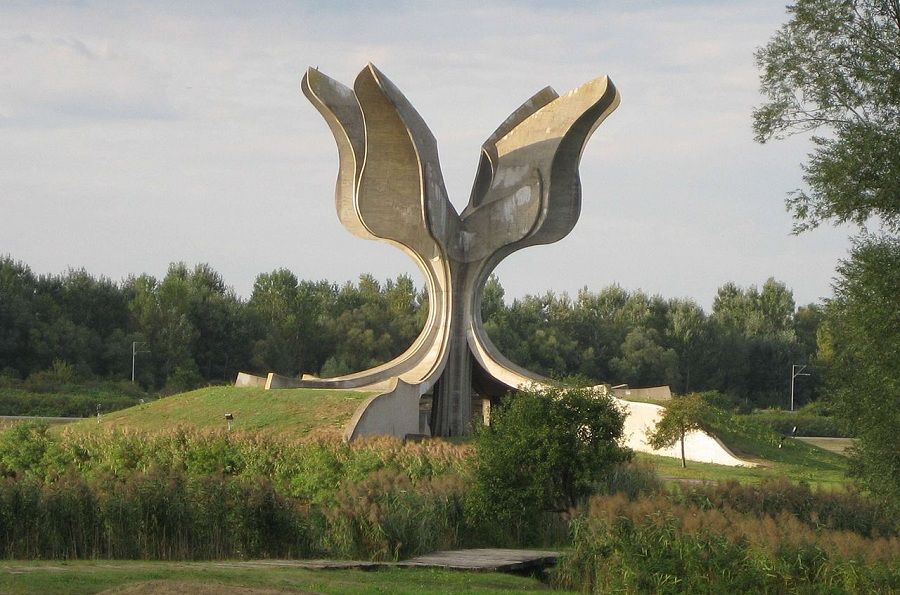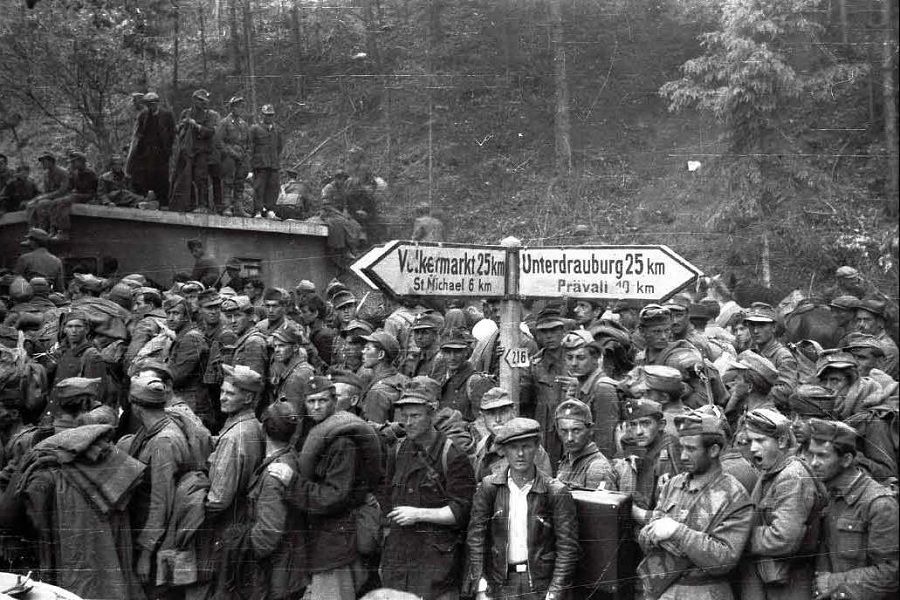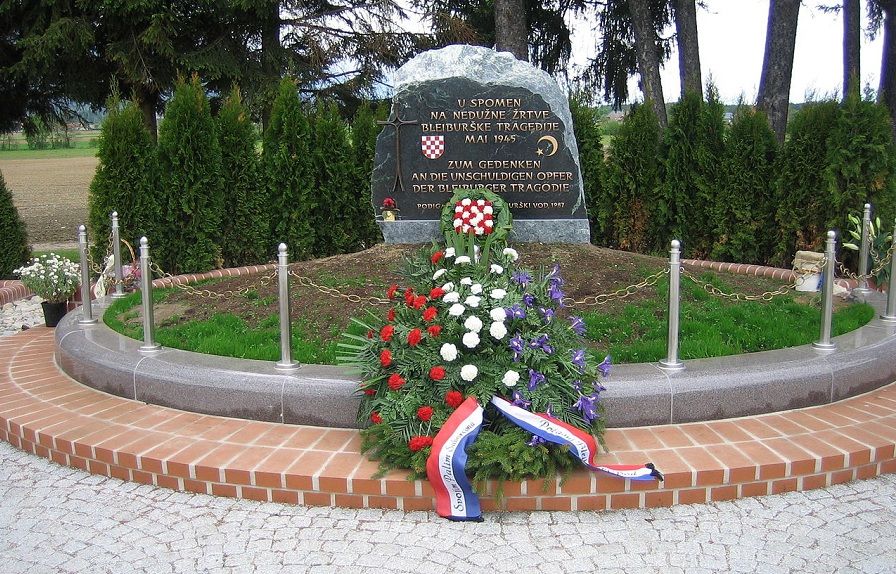An overview of two dark episodes in Croatian history.
On comments section on websites, there is a well-known rule called Godwin’s law – if an online discussion regardless of topic goes on long enough, sooner or later someone will compare someone or something to Hitler. In debates in Croatia, not only on the internet, there is a slightly lesser known but similarly obeyed rule which says – if a discussion regardless of topic goes on long enough, sooner or later someone will likely mention either Jasenovac or Bleiburg. And, if anyone mentions one of them, someone else will certainly mention the other.
Jasenovac, a small town on the bank of the river Sava in Croatia, and Bleiburg, a small town in Austria near the Slovenian border, have just one thing in common. Both were the sites of crimes which have become symbols of regimes which fought one against another, and whose echoes can still be felt today. You might think that 70 years after the events in question passions would have settled down, but you would be wrong. Debates about what happened where and which crime was worse are raging today maybe even louder and with more ferocity than ever before. Internet is full of “alternative facts” about both of them, but here is an overview of what happened according to more dispassionate sources.
Jasenovac
The concentration camp in Jasenovac was the largest concentration and death camp in the Independent State of Croatia, a Nazi-supported puppet state which was founded by members of the Ustasha movement in April 1941. Inmates of the concentration camp were Serbs, Jews, Roma, Croats (opponents of the Ustasha regime) and many others.
Jasenovac consisted of several smaller camps, all situated near the town of Jasenovac. The Ustasha regime began preparatory works for the establishment of the camp almost immediately after it came to power. There was no doubt where the Ustasha found their inspiration. This complex of camps was organized according to the model of concentration camps built by the Third Reich.

The Jasenovac concentration camp was the first systematically developed camp complex in the Independent State of Croatia, it was the only one which operated constantly through the entire existence of the regime, and was the largest by area and the number of prisoners. At the same time, it was a concentration camp, a transfer camp, a labour camp, a prisoner of war camp, and a death camp.
Allies bombed Jasenovac in March and April 1945, and the commander of the camp, realizing that the end was near, ordered the liquidation of all the remaining prisoners and the destruction of the camp, in order to conceal all traces of the crimes. The last group of women were liquidated on 21 April, and the next day the remaining male prisoners attempted to break out of the camp. Of 600 prisoners, just over a hundred survived.
The abandoned camp was liberated in early May by the Partisans, with the order to preserve the traces of crimes so that an investigation could be conducted. Obviously, one of the most important questions was how many victims were killed in the camp. Both sides of the debate have since offered numbers which are impossible to believe.
Yugoslav and particularly Serbian sources claimed that as many as 700,000 or 800,000 people were killed in Jasenovac. On the other hand, there are those who say that almost no one was killed deliberately there, and that the only victims were those who died of diseases and exhaustion. However, more objective researchers have reached the number of around 80,000 people killed. This rough estimate is confirmed by international sources as well, such as the United States Holocaust Memorial Museum in Washington. The debate about the number of victims has continued since the Second World War ended and will probably never end. Interestingly, and probably due to the disputes over the number of victims, Yugoslav President and Partisan leader Josip Broz Tito never visited Jasenovac during his 35 years in power.
In recent years, there has been another debate about what happened in Jasenovac after the Second World War ended. There are those who claim that the camp was not actually destroyed at the end of the war, but was kept in operation by the communist regime and used as a site for mass killings of captured members of the army of the Independent State of Croatia and the German forces. While it is certain that some prisoners of war were brought to Jasenovac after the war ended, according to the Jasenovac Memorial Site they were there to take part in cleaning of the remains of the former concentration camp. The last prisoners of war left Jasenovac in 1948, without any mass killings happening after the war.

The site of the concentration camp is today marked with a large monument to the victims, and the whole area is part of the Jasenovac Memorial Site. Every year, a commemoration takes place, which has unfortunately in recent years turned into a highly politicized event, with rather inappropriate debates about who will come when and with whom. In 2016, several separate commemorations took place, because various Jewish and antifascist associations protested against the government’s attitude towards the Ustasha regime. Given everything which has happened in the meantime, it would not be surprising if this year there are also several separate commemorative events.
Jasenovac has recently been in the news due to a controversial memorial plaque which has been put up in the town itself. It honours soldiers who died during the Homeland War in the 1990s. It is controversial due to the slogan “Za Dom Spremni” (For Homeland Ready) which is included on the plaque. That was the slogan used during the Independent State of Croatia. Many NGOs have demanded from the government to remove the plaque or replace it with the one without such an inscription, but the government rather decided to establish a special committee in which historians will debate what symbols and slogans it is appropriate to use. This has caused protests from Jewish and antifascist organizations.
Bleiburg
Bleiburg is a name which symbolizes a series of mass killing of prisoners of war which happened after the end of the Second World War. Although the majority of killings actually happened elsewhere, it all started with the surrender of the Independent State of Croatia’s military and some civilians at Bleiburg.
Everything began in mid-May 1945, when the military and civilians began to retreat towards Austria. British forces refused to accept the surrender and ordered them to surrender to the Yugoslav Army which was in pursuit.
It is still not clear how many people surrendered, but some sources claim it was close to 100,000 people. Bleiburg has become a symbol and a metaphor for many of the mass killings committed by victorious communist forces immediately after the war, although only a minority of soldiers and civilians were killed at Bleiburg and the surrounding area. Some estimates say that the number of killed Croats was in tens of thousands, with other estimates and inflated numbers ranging from a few thousand to hundreds of thousands. Most of the prisoners were killed during the marches through Yugoslavia and in prison camps in the coming months. These events are also called the Way of the Cross.

During the marches, mass liquidations were carried out at Maribor, Celje, and elsewhere in Slovenia, as well as in many places in Croatia. A significant number of people also died from exhaustion and infectious diseases in various camps which have been established by the communist regime. The general amnesty was declared in August 1945, but the killings (although in a lesser extent) continued.
Given the fact that any investigation of these event was strictly forbidden during the communist regime, the first serious research was started in the 1990s, which makes it even harder to determine even the approximate number of victims.
One of the major questions regarding Bleiburg and the Way of the Cross is the issue of responsibility of Partisan leader and Yugoslav President Josip Broz Tito. It seems rather unlikely that he would not have known and possibly even ordered such an extensive and long-term operation. So, his indirect and possibly direct responsibility seems rather obvious. Still, 27 years after the fall of communist regime, and despite the rise of nationalistic sentiments, many squares and streets in Croatian towns still bear the name of the communist ruler, which just demonstrates how complex his personal heritage is. Also, during his term in office, which lasted from 1945 until his death in 1980, he was a highly respected international leader who successfully balanced between the East and the West, particularly between Washington and Moscow.
Today, the site at Bleiburg is marked by a memorial where every year on the anniversary of the surrender thousands of people gather – most to pay their respects to the victims, but some to “honour” the Independent State of Croatia. In another parallel with Jasenovac, the issue of commemorative events is often a cause of political turmoil. Rightwing politicians from Croatia, including highest state officials, regularly attend the commemorations, which are occasionally held under the auspices of Parliament and President. On the other hand, leftwing politicians usually come prior to the main ceremonies, in order to avoid more unsavoury visitors, or rather choose to pay their respects to victims at other locations where mass graves have been found.

Many books have been written about both Jasenovac and Bleiburg, but there is still no consensus in Croatia about these tragic events. And it is quite unlikely that it will ever happen. The passions seem to be increasing rather than calming, and debates are endless. Just like Croatia is politically divided between the left and the right, so is the attitude towards the two crimes. “Bidding wars” with the number of victims are omnipresent, with both sides trying to prove that the opposite side committed greater crime and killed more people.
Whenever someone mentions Jasenovac as the greatest crime of the Independent State of Croatia and one of the darkest events in Croatian history, someone will inevitably ask “and what about Bleiburg”, and vice versa, as if one crime can justify another or make it seem more acceptable.
Importantly, during the 45 years of communist regime, only one of these crimes existed in the public discourse. That was Jasenovac, while Bleiburg was not to be mentioned. Obviously, that was shameful, although in a way understandable, since no authoritarian government wants to allow discussion of its own crimes. However, after the fall of communism in 1990, the situation changed completely. The authorities rightly started talking about Bleiburg and the Way of Cross, but at the same time they started pushing Jasenovac to the sidelines.
The attitude towards these two events is a reflection of Croatia’s unclear and complex attitude towards its history, which can best be seen in textbooks and documentaries, where it is often quite difficult to understand who the “good guys” were during the Second World War and whether Croatia had won or lost that war.
While Croats have dreamt about having an independent state for centuries, the war-time Independent State of Croatia was neither independent nor was it a real state, and any “statehood” was tarnished by its association with the fascists and the numerous crimes which were committed. On the other hand, antifascist struggle was later compromised by its association with authoritarian communist regime and the crimes which it committed during the following 45 years.
The best solution would be to separate aspirations for independence and the Independent State of Croatia on the one hand, and antifascist struggle and the communist regime on the other. But, given that no one had been able to do that in the last 70 years, it seems unrealistic that it could happen anytime soon.








